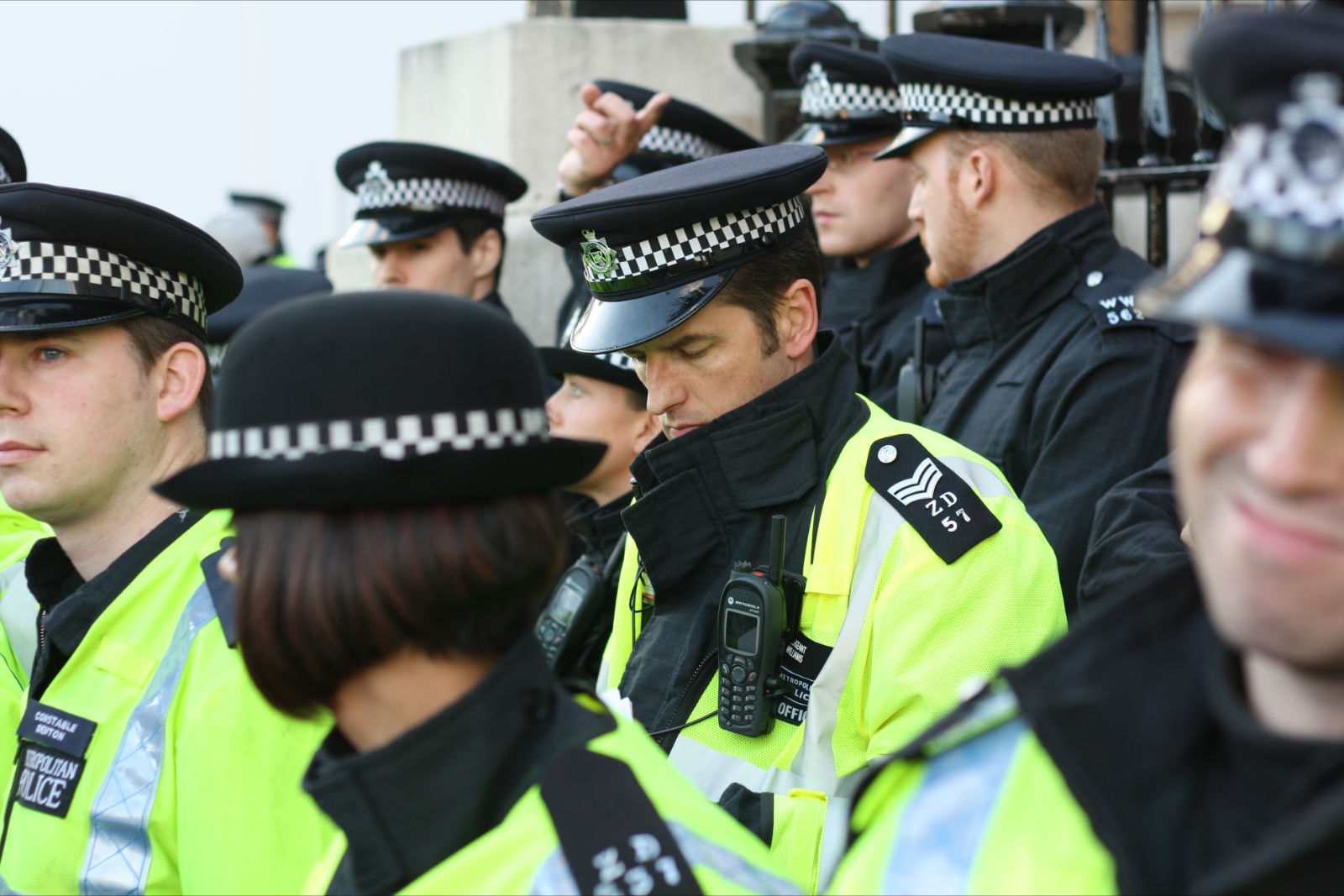Ten Years Since the Death of Ian Tomlinson, the Police Have Done Nothing to Regain Public Trust
by Sam Walton
1 April 2019

On 1 April 2009, in the midst of a huge protest against the G20 summit in London, newspaper seller Ian Tomlinson was violently assaulted by Metropolitan police officer Simon Harwood. This was an unprovoked attack, causing severe internal bleeding that led to Tomlinson’s death.
At the time of the assault, Tomlinson was walking away from Harwood and had his back turned. This was captured on video, and there were multiple witnesses. An inquest jury eventually returned a verdict of unlawful killing, and Harwood was discharged from the police – but this was his only punishment.
Watching the footage of Harwood striking Tomlinson, what is immediately shocking is how casual the act of violence appears. There is a protest taking place, and Harwood starts hitting people. But the complete lack of reaction from the officers standing next to him is just as worrying. Harwood killed a random person he came across, and the police officers next to him didn’t even blink.
After the assault, the police lied to everyone. They claimed protesters threw missiles at them whilst they tried to help Tomlinson. They told journalists not to talk to Tomlinson’s relatives and withheld information from his family. The so-called ‘Independent’ Police Complaints Commission (IPCC) repeatedly failed to handle the case correctly. The police selected now struck-off and disgraced pathologist Freddy Patel to perform a post-mortem examination on Tomlinson’s body, and asked him to “rule out any assault or crush injuries associated with public order”. Patel decided Tomlinson had died of a heart attack – a conclusion two subsequent examinations rejected, but one that was crucial in preventing Harwood’s successful prosecution.
That day at the G20 protests in London, myself and thousands of others were the targets of systematic police violence. I was wearing a bright orange legal observer tabard, and yet my video camera was broken by deliberate baton strikes. In the days afterwards I remember seeing the footage of lines of police in military-style riot gear wading with truncheons and fists into protesters, who were sat down with their hands in the air chanting ‘this is not a riot.’ It’s a wonder only one person was killed that day.
When the lies spun by the police collapsed in the face of video evidence, they tried the ‘PC Harwood is a bad apple’ narrative. It didn’t fly with the public. This was a rare instance when the state was forced to act in order to try and restore trust in public order policing, which had been severely shaken by events in London on 1 April. Its response was the HM Inspectorate of Constabulary report ‘Adapting to Protest’, which made some startlingly obvious recommendations that have led to some limited progress. These included the requirement that all police officers should wear visible identification numbers, and that senior officers in charge of public order operations should have proper training. Basic stuff.
Fortunately, the police haven’t killed anyone during a protest since Tomlinson. They got pretty close in the case of Alfie Meadows in student demonstrations a year later in 2010. They didn’t show much remorse then, however, and launched three criminal trials in attempts to discredit him (all of which failed).
Throughout the period since Tomlinson’s death, however, the policing of protests has remained inherently oppressive. We’ve seen mass arrests become commonplace, kettling routinely used, police violence in response to anti-fracking campaigners, and sustained and continued efforts to gather surveillance on protesters and label them ‘domestic extremists’. The full weight of the criminal justice system, which most recently came down on the Stansted 15, is regularly imposed on non-violent protesters in an effort to shut down the prospect of future actions.
At the same time, the other side of public order policing – in working class and particularly black communities – is as extensive and discriminatory as ever. Young black boys are routinely stopped and searched, and many families have experienced the deaths of loved ones at the hands of the police. And, like Harwood, the officers responsible are never convicted.
This continuing lack of accountability is simply not credible. While the political situation in 2019 is obviously different to 2009, in most fundamental respects policing in the UK has barely changed. Protest is still treated by police forces in the same way they treat crime – as something to be prevented and deterred, not as a public good that police should facilitate. Most complaints are still dealt with by the police themselves, serious cases including custody deaths are still not investigated by a genuinely independent body, and officers are seldom charged.
There was a moment after Ian Tomlinson’s death in 2009 when the police could have chosen to try and regain public trust. They could have done more than just make visible the numbers on officers’ shoulders. They could have made sure PC Harwood, caught on video killing a member of the public, was punished. That they failed to do so suggests, for me, that maintaining public order still trumps all other priorities, including gaining public trust, facilitating protest, and justice.